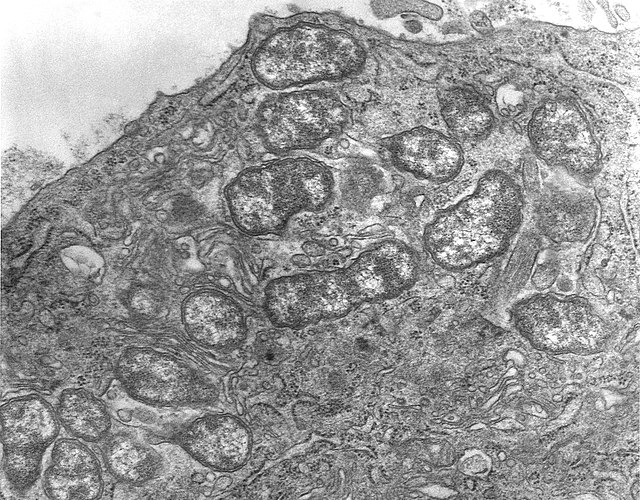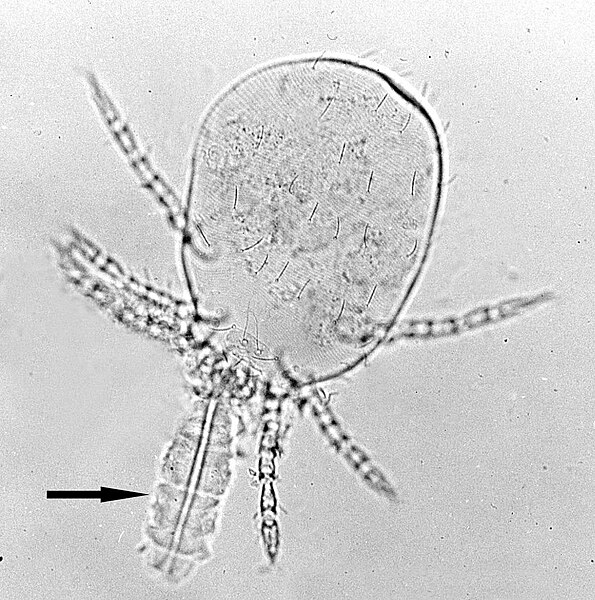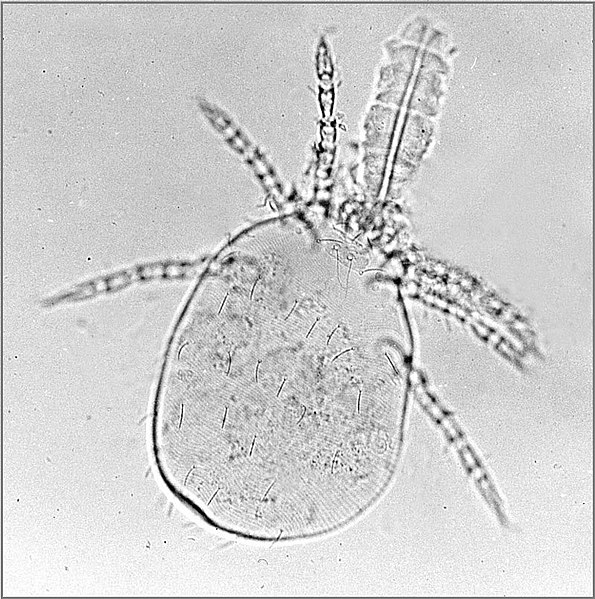Orientia tsutsugamushi is a mite-borne bacterium belonging to the family Rickettsiaceae and is responsible for a disease called scrub typhus in humans. It is a natural and an obligate intracellular parasite of mites belonging to the family Trombiculidae. With a genome of only 2.0–2.7 Mb, it has the most repeated DNA sequences among bacterial genomes sequenced so far. The disease, scrub typhus, occurs when infected mite larvae accidentally bite humans. This infection can prove fatal if prompt doxycycline therapy is not started.
Orientia tsutsugamushi
Chigger with its stylostome (arrowhead), the feeding apparatus.
O. tsutsugamushi in human (U937) cells.
Genomes of O. tsutsugamushi strains. From outermost to innermost ring of each genome: repetitive regions in purple, core genes in green, repeat genes in red and pseudogenes in blue. The innermost line graph shows GC-content (1000bp windows) with above-median region in green, and below-median regions in red.
Trombiculidae, commonly referred to in North America as chiggers and in Britain as harvest mites, but also known as berry bugs, bush-mites, red bugs or scrub-itch mites, are a family of mites. Chiggers are often confused with jiggers – a type of flea. Several species of Trombiculidae in their larva stage bite their animal host and by embedding their mouthparts into the skin cause "intense irritation", or "a wheal, usually with severe itching and dermatitis". Humans, being animals, are possible hosts.
Trombiculidae
Chigger-caused lesions on human skin showing characteristic welts
A Trombiculid mite larva attached to human skin







